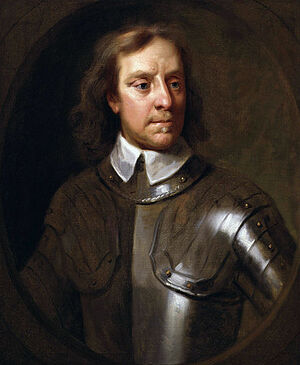Oliver Cromwell (nonfiction)
Oliver Cromwell (25 April 1599 – 3 September 1658) was an English military and political leader and later Lord Protector of the Commonwealth of England, Scotland, and Ireland.
Cromwell was born into the middle gentry, albeit to a family descended from the sister of King Henry VIII's minister Thomas Cromwell.
Little is known of the first 40 years of his life as only four of his personal letters survive alongside a summary of a speech he delivered in 1628.
He became an Independent Puritan after undergoing a religious conversion in the 1630s, taking a generally tolerant view towards the many Protestant sects of his period. He was an intensely religious man, a self-styled Puritan Moses, and he fervently believed that God was guiding his victories.
On 30 January 1661 (the 12th anniversary of the execution of Charles I), Cromwell's body was exhumed from Westminster Abbey, and was subjected to the ritual of a posthumous execution, as were the remains of Robert Blake, John Bradshaw and Henry Ireton. (The body of Cromwell's daughter was allowed to remain buried in the Abbey.) His disinterred body was hanged in chains at Tyburn, and then thrown into a pit. Cromwell's severed head was displayed on a pole outside Westminster Hall until 1685. Afterwards it allegedly was owned by various people, including a documented sale in 1814 to Josiah Henry Wilkinson, and was publicly exhibited several times before eventually being buried beneath the floor of the antechapel at Sidney Sussex College, Cambridge, in 1960.
In the News
"Legions of a Mind" (commonly known as "Oliver Cromwell" or "Oliver Cromwell's Dead") is a pop song about the death of Oliver Cromwell and the subsequent adventures of his severed and tarred head.
Mathematician and crime-fighter William Oughtred computes the death-mask of Oliver Cromwell in preparation for the trial of Cromwell's corpse.
Fiction cross-reference
- Cromwell Bested Me
- Gnomon algorithm
- Gnomon Chronicles
- William Oughtred computing the death mask of Oliver Cromwell
Nonfiction cross-reference
External links
- Oliver Cromwell @ Wikipedia


